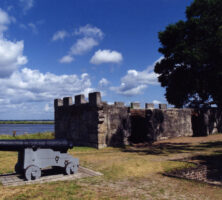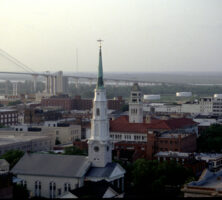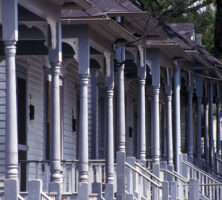Georgia’s cultural landscape is a product of the distinct history of the state, of what has been built, of what has been preserved, and of past and future developments. The ordinary, or vernacular, environment in which its people live, work, and play represents many layers of time and human activity. From the coastal settlements, marshes, and beaches through the sandy hills and wiregrass agricultural areas of middle Georgia to the sprawling cities of the Piedmont and the mountains of north Georgia, the diverse qualities of the natural and man-made environment are a fundamental part of the lives of all Georgians.
Evidence of History in Georgia’s Landscape
Though Georgia’s history is a part of the nation’s history and shares many national patterns, the state has a distinct history that is reflected in the cultural landscape. Thousands of years of Native American settlements followed by two centuries of Spanish exploration and settlement preceded the founding of the Georgia colony in 1733 and have left their mark in archaeological sites across the state. Much of this prehistory and colonial history remains undocumented, but the Spanish and early colonial period is represented by such places as Fort Frederica and the Bloody Marsh battlefield on St. Simons Island. Sapelo Island’s shell ring, the Etowah Indian Mounds, and similar sites preserve the evidence of Indian habitation. As the state’s historic preservation plan points out, “The evidence of history takes the form of buildings and structures, historic and archaeological sites, historic landscapes and traditional cultural properties, and historic districts.”
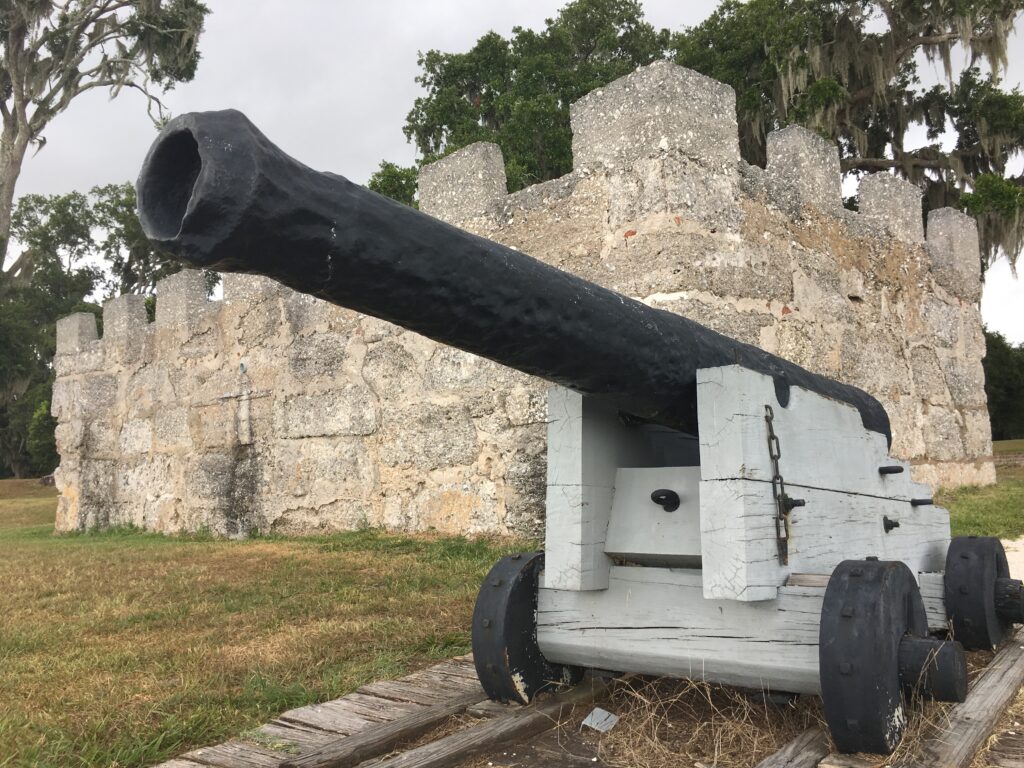
Image from HAL333
Distinctive Georgia Patterns
Among the distinctive aspects of Georgia history is the colonial period. Remnants of the period include a small number of colonial buildings and the Savannah plan, with its still-extant landscaped squares and town-house residential patterns. An extended frontier period and area is still represented by the agricultural landscape of the Piedmont and Wiregrass areas, and by the Plantation Plain style farmhouses and other vernacular buildings of the early nineteenth century. High-style Greek revival and other classically detailed buildings and gardens from this period remain in many Georgia towns. The nin eteenth- and twentieth-century periods of settlement and development as well as the practices of the timber industry, forestry management, and agriculture have left their mark in large expanses of agricultural and wooded countryside. Although considerably reduced in size, large areas of the state reflect the impact of cotton as a primary economic determinant, as do the plantation buildings and fields associated with them. The cotton textile industry of the late nineteenth century produced mill complexes not only in the fall-line cities of Columbus, Macon, and Augusta but also in many smaller towns in north Georgia. Some, often very large, mill buildings still function as mills, but many are being adapted to housing and other contemporary uses.
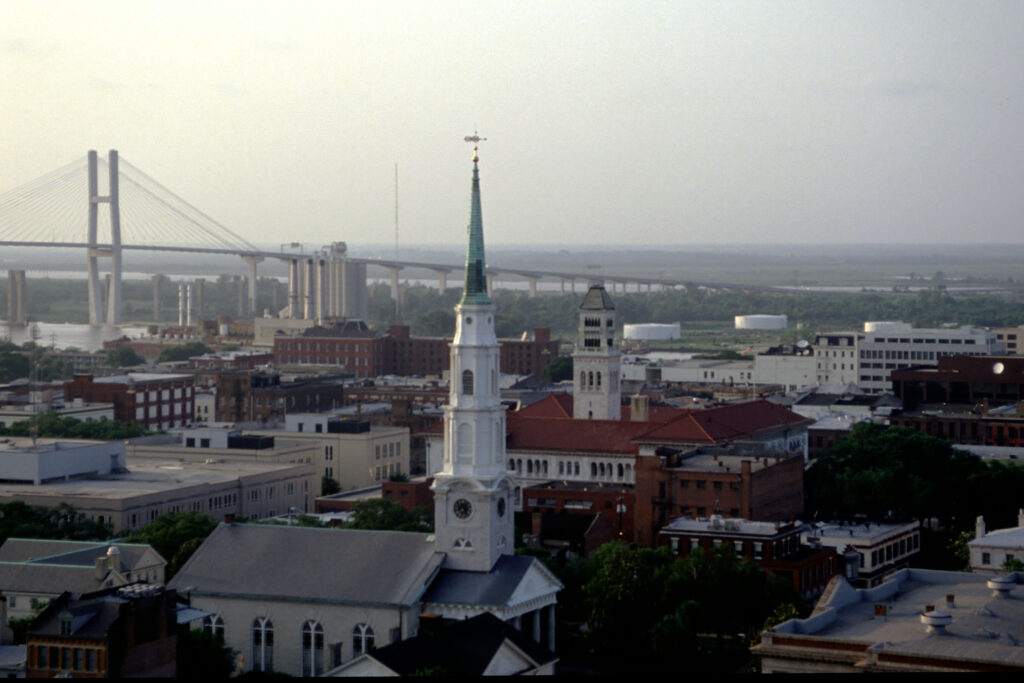
Courtesy of Historic Preservation Division, Georgia Department of Community Affairs.
From the founding of Atlanta in 1837 as the termination point for a rail line, both the city and the railroads have exerted a dominant influence on the cultural landscape. Although the extent of the rail lines is continually diminishing, the patterns they have made, some now repurposed as trails, remain. Depots and associated rail yard buildings are being preserved. Atlanta, which has become a major transportation hub, continues to expand as one of the largest metropolitan centers in the nation.
Georgia in the Nation’s History
Distinct Georgia patterns have also been an important part of the nation’s history. The Cherokee Indian and Creek Indian nations, which were forced to leave the state in the 1830s, were for many years based in north Georgia. A remarkable legacy of Cherokee and Creek buildings and archaeological sites remains.
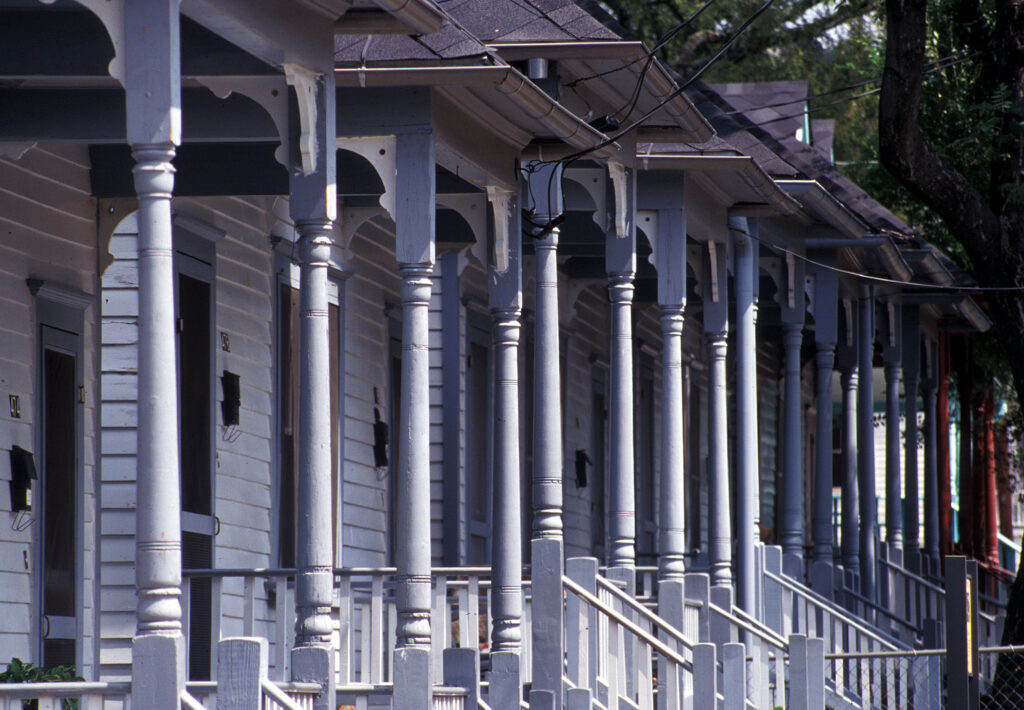
Courtesy of Historic Preservation Division, Georgia Department of Community Affairs.
The role of the state as a major theater of the Civil War (1861-65) is still visible, particularly in the buildings and battlefields of the Atlanta campaign and the March to the Sea corridors. Sherman’s victory in Atlanta assured Lincoln’s reelection in 1864.
A strong African American cultural presence throughout Georgia’s existence and the major role that Georgia played in the civil rights movement of the twentieth century have left an extensive imprint. This is especially visible in the Martin Luther King Jr. and Sweet Auburn areas of Atlanta as well as in buildings and neighborhoods all over the state.
Finally, the state has a rich religious history. John Wesley, founder of the Methodist Church, sailed with James Oglethorpe and served as rector in colonial Savannah. The first Jews arrived in Savannah soon after Oglethorpe and in 1735 established Congregation Mickve Israel, the nation’s third-oldest Jewish congregation. The state is also home to some of the nation’s oldest Black Baptist churches, including Savannah’s First African Baptist Church and Augusta’s Springfield Baptist Church, both dating to the 1770s. Catholicism, though initially banned in the colony, was one of the state’s earliest religious institutions, first introduced by Spanish missionaries in the sixteenth and seventeenth centuries.
Ordinary Places
While these larger patterns remind us of the historical forces that have shaped Georgia, it is in the places where people live and work that the past is most detectable. Many Georgians live in historic residential neighborhoods; some work in historic buildings or shop in older downtowns. The character of such places has been determined by architecture and landscape. Contrary to general belief, the majority of residential buildings in these districts are not white-columned antebellum mansions but, rather, late-nineteenth-century, two-story Victorian houses or early-twentieth-century Craftsman-style bungalows along tree-lined streets. Since the mid-twentieth century these architectural examples have been joined by ranch-style houses often set in a suburban landscape of broad lawns and irregular street patterns that with the passage of time are becoming historic features of our environment. Helping to shape these areas are the landscape changes made by ordinary citizens in the places where they live. From the utilitarian “landscape of work” of rural farmsteads to the ornamental, often formal, gardens that provide the setting for larger, more monumental structures to the many planting fashions and traditions of residential yards and tree-lined streets, the individual decisions of many Georgians have defined the landscape.
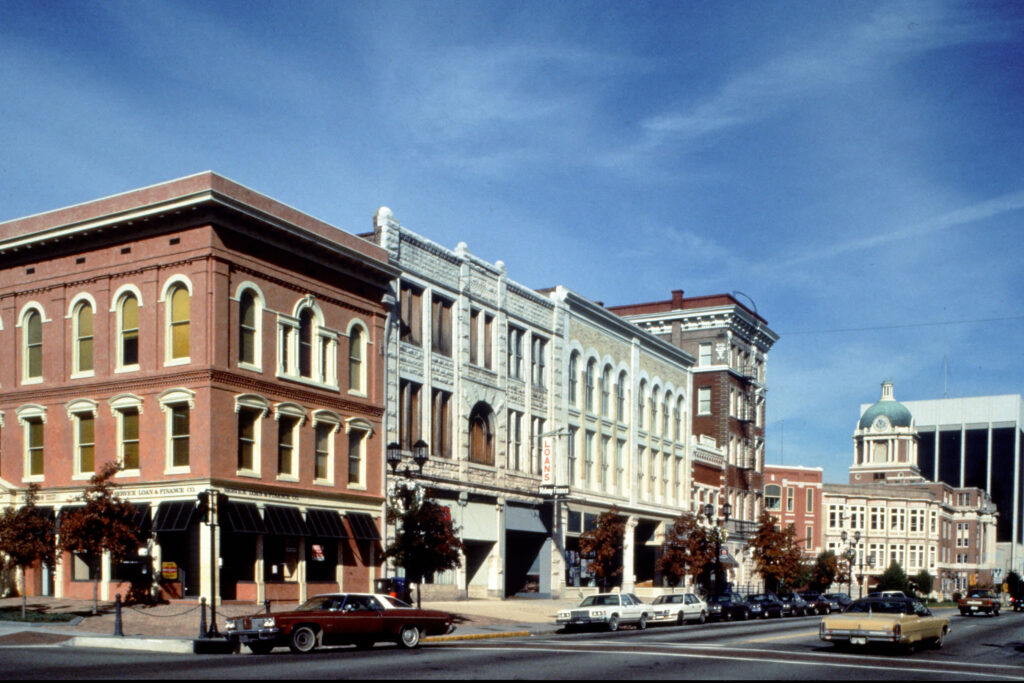
Courtesy of Historic Preservation Division, Georgia Department of Community Affairs.
Enhancing historic residential areas are the rehabilitated downtowns and “Main Streets” across the state that are now part of the economic and social life of many small towns and urban neighborhoods. Such community landmarks as historic county courthouses, some with courthouse squares, and other public buildings and churches, which are often their most visible features, also affect the character of these places. Parks and other public landscaped spaces are also important defining features of these environments. For most of their buildings, Georgians have generally preferred traditional forms and styles of architecture. However, Atlanta’s modern buildings have not only shaped the landscape of Georgia’s largest metropolitan area but also influenced the architecture of other large Georgia cities.
Evolving Cultural Landscape
Georgia’s cultural landscape is continually evolving, as the suburban areas around its largest cities grow and the highways needed to reach them expand. Many residents deplore the sprawling development that is eating up the countryside and the traffic congestion that sprawl spawns, yet they value suburban living. While the immediate environment often is taken for granted, in many places historic preservation activity and organizations have begun, grown, and become strong in response to the loss or threatened loss of a valued place. Decisions that are made about the balance between old and new development and how these affect the quality of community life determine the character of Georgia’s cultural landscape. Understanding the patterns of history, the natural environment, and the existing development and exploring ways to retain historic places in the context of new development can help in making better decisions for the future.









